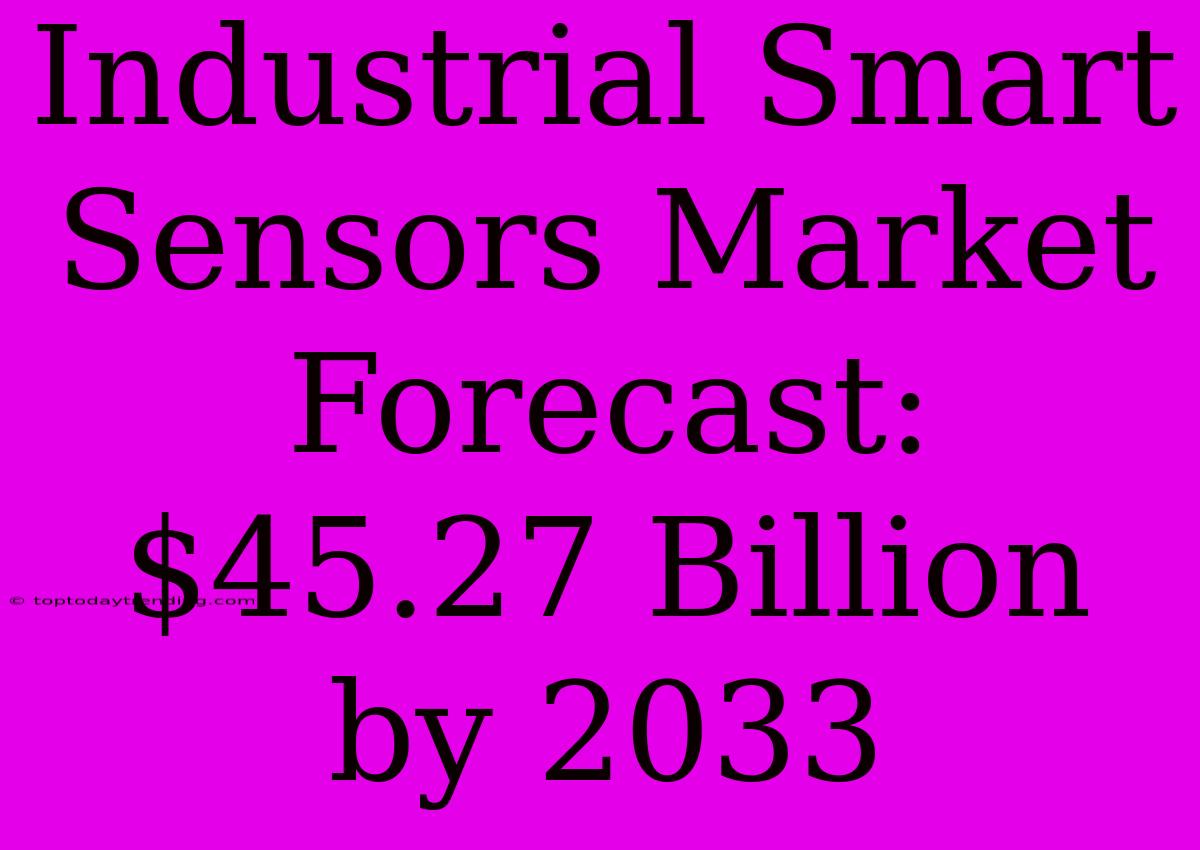Industrial Smart Sensors Market Forecast: $45.27 Billion by 2033 - A Comprehensive Analysis
The Industrial Smart Sensors Market is poised for explosive growth, driven by the increasing adoption of Industry 4.0 initiatives and the growing demand for real-time data insights across various industries. A recent market report forecasts the market to reach a staggering $45.27 billion by 2033, growing at a CAGR of 9.7% during the forecast period (2023-2033).
This blog post delves into the key factors driving this growth, explores the different types of industrial smart sensors, and analyzes the market's future outlook.
Key Drivers of Growth:
- Industry 4.0 Adoption: The shift towards smart factories and interconnected systems relies heavily on the ability to gather real-time data from various processes. Industrial smart sensors are crucial in facilitating this data acquisition, enabling predictive maintenance, optimized resource allocation, and improved production efficiency.
- Increasing Automation & Robotics: As automation and robotics play a more prominent role in manufacturing, the need for advanced sensors to monitor and control these systems becomes essential. Smart sensors offer the precision and intelligence required for seamless integration with robots and automated processes.
- Rise of IoT & Connected Devices: The Internet of Things (IoT) has revolutionized the way we collect and analyze data. Industrial smart sensors, being integral components of IoT ecosystems, contribute significantly to this connected data flow, enabling remote monitoring, predictive analytics, and informed decision-making.
- Growing Demand for Data-Driven Insights: Businesses are increasingly seeking data-driven insights to optimize operations and make informed decisions. Smart sensors, capable of capturing and transmitting a wide range of data parameters, provide the foundation for this data-driven approach, leading to improved efficiency, quality control, and cost optimization.
Types of Industrial Smart Sensors:
- Pressure Sensors: These sensors measure pressure in various industrial applications, including hydraulic systems, pneumatic systems, and fluid handling.
- Temperature Sensors: Vital for monitoring temperature in industrial processes, these sensors are critical in industries like manufacturing, energy, and food processing.
- Position Sensors: Used for tracking the position of machinery parts or objects, these sensors are essential for precise control and automation in applications such as robotics and machine control.
- Flow Sensors: These sensors measure the rate of fluid flow, crucial for monitoring and controlling fluid movement in various industrial processes, including chemical processing, oil & gas, and water management.
- Level Sensors: Measuring the level of fluids or solids within tanks or containers, level sensors are essential in applications involving storage, transportation, and processing of materials.
- Proximity Sensors: Used to detect the presence or absence of objects without physical contact, these sensors are widely used in applications like automated assembly lines, conveyor systems, and robot guidance.
Market Outlook:
The Industrial Smart Sensors market is projected to witness significant growth in the coming years. The increasing adoption of smart manufacturing practices, the surge in demand for industrial automation, and the proliferation of IoT applications are all expected to fuel this growth.
Key Opportunities:
- Integration with AI & Machine Learning: Combining smart sensors with AI and machine learning algorithms opens up new avenues for predictive maintenance, process optimization, and anomaly detection.
- Wireless Sensor Networks: The development of wireless sensor networks further enhances the capabilities of smart sensors, allowing for real-time data acquisition and analysis in remote locations.
- Cloud-Based Solutions: Connecting smart sensors to cloud platforms enables centralized data storage and analysis, facilitating informed decision-making and improved operational efficiency.
Conclusion:
The Industrial Smart Sensors Market is experiencing rapid growth driven by the increasing adoption of Industry 4.0 principles and the demand for data-driven insights. The market's future holds significant opportunities for innovation and growth, with the convergence of smart sensors, AI, IoT, and cloud technologies shaping the landscape of industrial automation and smart manufacturing.

